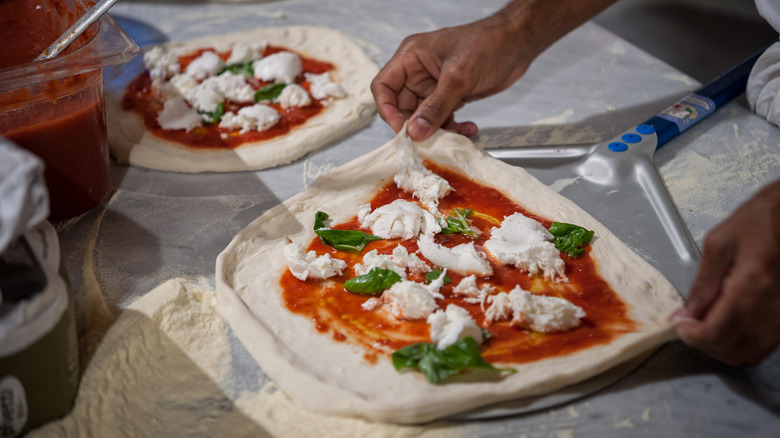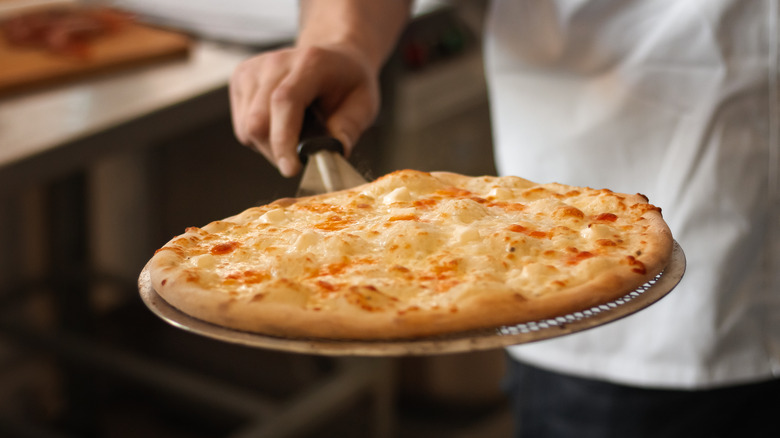Do You Really Need A Pizza Peel For Your Pizza Stone?
Let's be honest here: Is there really any food that's more delicious than pizza? Sure, it's a wide, wonderful culinary world out there, but it's truly hard to beat a pizza pie. A well-made pizza features a crisp, well-cooked crust; balance between the sauce, cheese, and any other toppings; and cheese that's melted and gooey, yet not burnt (via Pizza University). By the slice or by the pie, it's irresistible. Personally, we love a classic Neapolitan, an indulgent deep dish, and even an egg-topped breakfast-for-dinner pizza.
As fun as it is to make pizza at home — and we do it often — it's impossible to replicate a restaurant pie in a home oven, which simply doesn't get as blazing hot as commercial pizza ovens (via Pizzacraft). So in order to at least approximate the results of restaurant pizza — most importantly, the well-baked crust — it's essential to call upon a specialized piece of cooking equipment when you're pizza-ing at home: a pizza stone. A pizza stone is simply a square or round piece of clay, ceramic, or the silicate mineral cordierite (via The Kitchn). When used as a cooking surface for a pizza, it helps transfer the heat of a home oven and create a well-baked pie.
Now that we've established that you need a pizza stone when cooking at home, the question is: Do you also need a pizza peel? Read on to find out what a peel is — and if you need one.
You can sub a large plate, a cutting board, or a baking sheet for a pizza peel
Ideally, if you make pizza at home, you're already using a pizza stone, which helps home ovens perform more like brick ovens and create a more evenly cooked pie (via Food Network). And when you went looking for your pizza stone, you might have noticed another piece of cooking equipment called a pizza peel.
According to Food Network, a pizza peel is an oversized spatula with a long handle used to transfer the pizza to and from the stone inside the oven. You've probably seen a wooden peel, but aluminum pizza peels are another popular option (via Katom). Whichever material you choose, it's essential to sprinkle it with cornmeal before placing the raw, stretched-out dough on top. Then, you can top the pizza and shake-slide it onto the stone. When the pizza is cooked, you can use the peel to transfer it from the stone to your cutting board.
Don't want to invest in a pizza peel? While it's the option least likely to result in burns thanks to its long handle, with some extra care, you can swap a pizza peel for a large, rimless plate or baking sheet or a big cutting board. Just make sure that when transferring your pie to and from the stone, you pull out the oven rack the stone is on before going in with your peel substitute. Happy pizza-baking!

